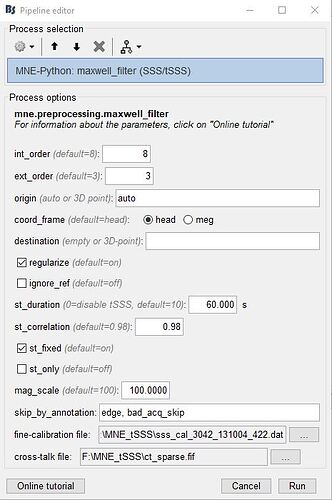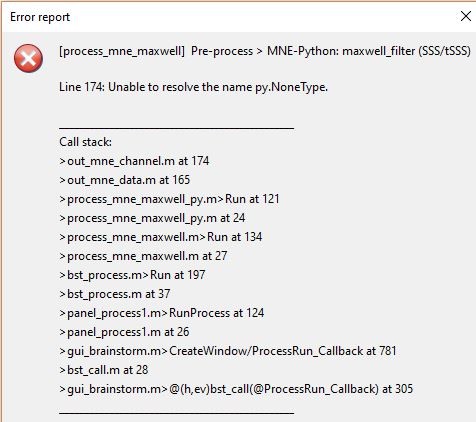Hi,
In my preprocessing pipeline, I apply tSSS to all of my recordings. I have a question regarding how this is applied on empty-room recordings. In both MaxFilter and MNE implementations of tSSS, the expansion origin of the spherical harmonics is (0, 0, 0) in MEG coordinate system when there is no head-device transformation information. Since this information is omitted in empty-room recordings, it is automatically taken care of. However, in Brainstorm, a default head-device transformation is applied automatically to empty-room recordings, so it is possible to still use head coordinate system (which is the default in Brainstorm). I personally tried both head and meg coordinate systems for my empty-room recordings and I somehow get much better results (i.e. results as expected) when I use head coordinate system. When I try to use meg coordinate system, the variation between the channels becomes so high that it seems tSSS is introducing new noise to the data. I believe the reason for this could be that when automatic head transformation is applied, meg coordinate system is affected too and maybe the new origin is outside the MEG helmet. Is there a way to deactivate this automatic transformation? Also, would you have any further suggestions on this issue?
Sorry for the long post and thank you for your help.
Best regards,
Levent

